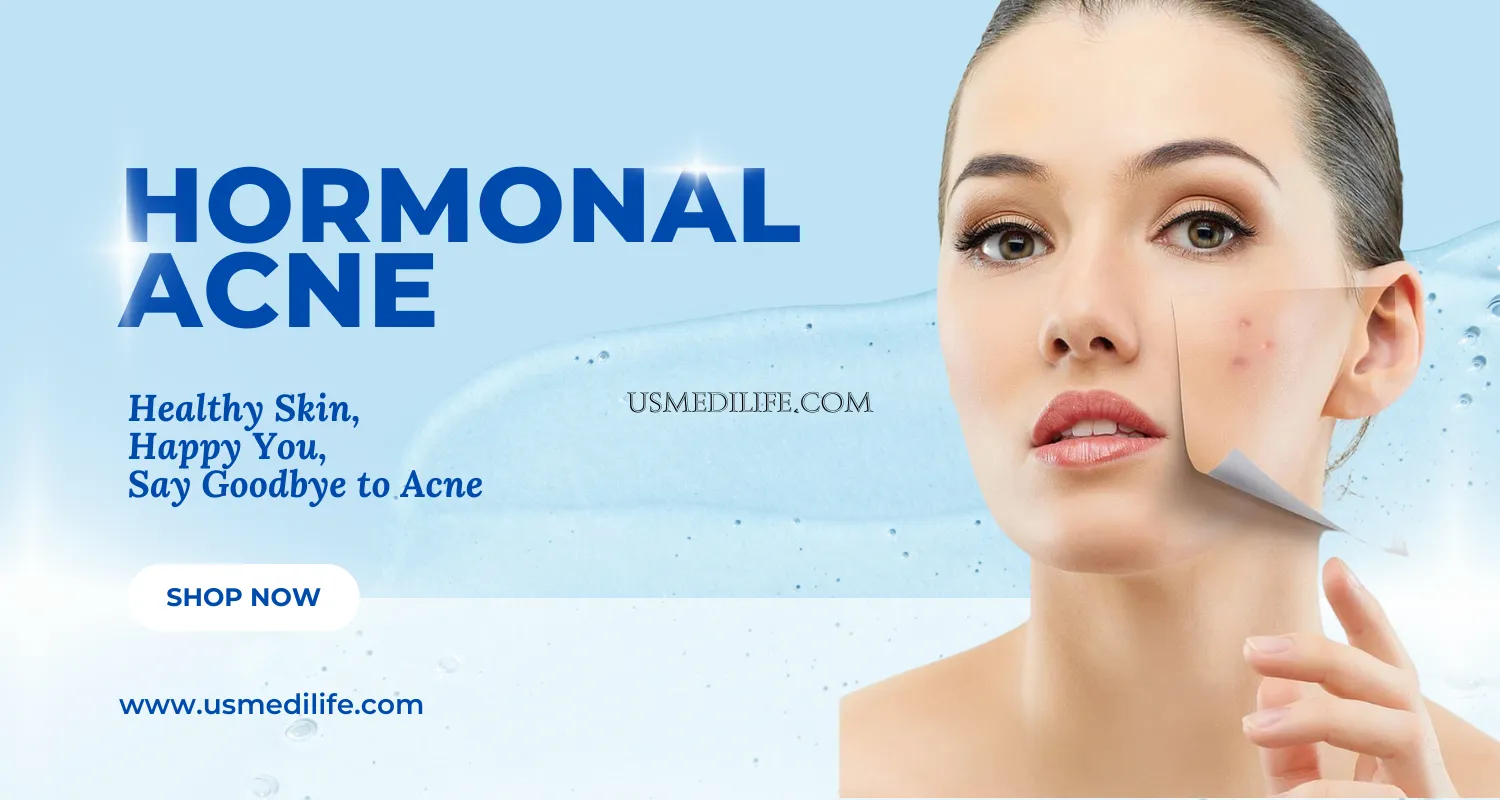
Dr. Ashwini
02-01-2025
Hormonal Acne Explained: Causes, Symptoms, and Treatment Options
Hormonal Acne is a common skin condition, but not all acne is created equal. Hormonal skin break out, as the name recommends, is attached to variances in chemicals. It can be frustrating and persistent, often requiring a targeted approach for effective management. If you’ve ever wondered what causes hormonal acne, how to identify it, and what treatment options are available, this guide is here to help.
What is Hormonal Acne?
Hormonal skin break out is skin break out brought about by changes in chemical levels. These fluctuations can trigger overproduction of oil (sebum) in the skin, clogging pores and leading to the development of pimples, cysts, and blackheads.
While hormonal acne can affect anyone, it’s most commonly seen in women due to hormonal changes associated with:
- Menstrual cycles
- Pregnancy
- Menopause
- Polycystic Ovary Syndrome (PCOS)
Men can also experience hormonal acne, especially during puberty when testosterone levels surge.
Causes of Hormonal Acne
Hormonal acne is primarily driven by changes in hormone levels, which can lead to increased sebum production and inflammation. Common causes include:
-
Androgens (e.g., testosterone): Elevated levels of androgens stimulate sebaceous glands to produce more oil, increasing the likelihood of clogged pores.
-
Menstrual Cycle: Hormone levels fluctuate during the menstrual cycle, with progesterone and estrogen dropping in the luteal phase, often triggering breakouts.
-
Polycystic Ovary Syndrome (PCOS): PCOS can cause an imbalance in androgen levels, leading to persistent acne.
-
Stress: Stress triggers the release of cortisol, which can worsen hormonal imbalances and contribute to acne.
-
Diet: High-glycemic foods and dairy products have been linked to hormonal fluctuations that may exacerbate acne.
-
Hormonal Medications: Birth control pills, hormone replacement therapy, or medications affecting hormone levels can influence acne development.

Symptoms of Hormonal Acne
Hormonal acne often appears in distinct patterns and forms. Common signs include:
- Location: Concentrated on the lower face, jawline, chin, and neck.
- Timing: Flare-ups often coincide with hormonal shifts, such as before menstruation.
- Type of Acne: Includes deep, painful cysts, pustules, and nodules rather than surface-level blackheads or whiteheads.
- Persistence: Often chronic and recurrent, especially in adult women.
Treatment Options for Hormonal Acne
Managing hormonal acne requires a multi-faceted approach that targets both the symptoms and the root cause. Here are some of the most effective treatment options:
1. Over-the-Counter (OTC) Treatments
- Benzoyl Peroxide: Reduces bacteria on the skin and prevents clogged pores.
- Salicylic Acid: Sheds the skin, unclogs pores, and lessens irritation.
- Retinoids: Help speed up cell turnover to prevent clogged pores and reduce acne scars.
2. Prescription Medications
- Oral Contraceptives: Birth control pills containing estrogen and progestin can regulate hormone levels and reduce androgen production.
- Spironolactone: A medication that blocks androgen receptors, decreasing sebum production and preventing hormonal acne.
- Topical Retinoids: Stronger formulations like tretinoin can target acne more effectively.
- Antibiotics: Used for short-term management to reduce inflammation and bacteria.
3. Lifestyle Changes
- Dietary Adjustments: Reduce intake of high-glycemic foods and dairy. Incorporate anti-inflammatory foods like omega-3 fatty acids, vegetables, and whole grains.
- Stress Management: Practice stress-reducing techniques such as yoga, meditation, or regular exercise.
4. Professional Treatments
- Chemical Peels: Exfoliate the skin and reduce acne-causing bacteria.
- Laser and Light Therapy: Targets skin break out causing microorganisms and decreases aggravation.
- Drainage and Extraction: Performed by a dermatologist to safely remove large cysts.
5. Natural Remedies
- Tea Tree Oil: Known for its antibacterial and mitigating properties.
- Zinc Supplements: Can help reduce inflammation and sebum production.
- Aloe Vera: Soothes irritated skin and promotes healing.
When to See a Dermatologist
While mild cases of hormonal acne can often be managed with OTC treatments and lifestyle changes, severe or persistent acne may require professional help. Consult a dermatologist if:
- Acne is painful or causes scarring.
- OTC treatments fail to improve symptoms after 6–8 weeks.
- You experience additional symptoms like irregular periods or excessive hair growth (possible signs of PCOS).
Preventing Hormonal Acne
While not all cases of hormonal acne can be prevented, these tips may help minimize flare-ups:
- Keep a predictable skincare routine with delicate, non-comedogenic items.
- Keep your skin clean by cleaning up two times day to day.
- Try not to contact your face every now and again to diminish microscopic organisms move.
- Stay hydrated and maintain a balanced diet.
- Manage stress through regular exercise and mindfulness practices.
Final Thoughts
Hormonal acne can be frustrating, but understanding its causes and exploring targeted treatments can make a significant difference. From lifestyle changes to prescription medications, there are effective ways to regain control over your skin and confidence.
FAQs:
1. What is hormonal acne?
Hormonal acne refers to acne that is caused by fluctuations in hormone levels, often linked to puberty, menstruation, pregnancy, or conditions like polycystic ovary syndrome (PCOS). It typically appears along the jawline, chin, and lower face, where sebaceous (oil) glands are more active.
2. What causes hormonal acne?
Hormonal acne is primarily caused by an increase in androgens, male hormones that are present in both men and women. Androgens stimulate oil glands in the skin to produce more sebum, which can clog pores and lead to acne.
3. When does hormonal acne typically occur?
Hormonal acne most commonly occurs during puberty, pregnancy, and menstrual cycles. It can also be triggered by conditions like polycystic ovary syndrome (PCOS) or stress, and can affect people of any age, especially women.
4. How do you know if your acne is hormonal?
Hormonal acne typically appears in areas of the face where oil production is higher, such as the jawline, chin, and along the neck. It may flare up during specific hormonal events, like the menstrual cycle. If your acne is cyclical and linked to hormonal shifts, it is likely hormonal.
5. Can stress cause hormonal acne?
Yes, stress can trigger an increase in cortisol, a hormone that can affect other hormone levels and lead to increased oil production in the skin, contributing to hormonal acne.
6. What are the common treatments for hormonal acne?
Answer: Treatment for hormonal acne may include over-the-counter products containing benzoyl peroxide or salicylic acid, prescription topical treatments like retinoids, oral medications such as birth control pills or anti-androgens, and lifestyle changes like reducing stress and maintaining a healthy diet.
7. Is hormonal acne different from regular acne?
Answer: Yes, hormonal acne is primarily driven by hormonal fluctuations, while regular acne may be caused by factors like bacteria, clogged pores, or excess oil production without significant hormonal involvement. Hormonal acne is also more likely to occur along the jawline and chin.
8. Can diet affect hormonal acne?
While the link between diet and hormonal acne is not fully understood, some studies suggest that high-glycemic foods, dairy, and excessive sugar intake may exacerbate acne in some people. A balanced diet rich in vitamins and minerals can help support skin health.
9. Can hormonal acne be prevented?
While it may not be entirely preventable due to factors like genetics or hormonal changes, you can manage hormonal acne by maintaining a consistent skincare routine, managing stress, avoiding triggers, and considering medical treatments like birth control or anti-androgens if appropriate.
10. Is hormonal acne permanent?
No, hormonal acne is usually temporary. It often improves with age or once the underlying hormonal imbalance is addressed. However, some individuals may continue to experience acne flare-ups during hormonal changes (e.g., pregnancy, menstruation) throughout their lives.
11. Can birth control help with hormonal acne?
Yes, birth control pills can help regulate hormones and reduce the oil production in the skin, which may improve hormonal acne. Certain types of birth control, especially those containing estrogen and progestin, are often prescribed for acne treatment.
12. What are the best skincare products for hormonal acne?
Look for gentle, non-comedogenic products with ingredients like salicylic acid, benzoyl peroxide, or tea tree oil. Avoid products with heavy oils or fragrances, as they can worsen acne. It's also important to incorporate a consistent skincare routine with cleansing, exfoliating, and moisturizing to keep skin balanced.
13. Can men get hormonal acne?
Yes, men can experience hormonal acne as well, though it is more common in women due to hormone fluctuations associated with menstruation, pregnancy, and menopause. Men may experience acne linked to testosterone levels or stress-related hormonal changes.
14. What is the best way to treat hormonal acne during pregnancy?
Pregnant women should consult a doctor before using acne treatments, as some products, like retinoids or certain oral medications, are not recommended during pregnancy. Gentle skincare with salicylic acid or natural alternatives like tea tree oil may be safer options, but always seek professional advice first.
15. Can hormonal acne cause scarring?
If left untreated or picked at, hormonal acne can lead to scarring, including dark spots (hyperpigmentation) or more severe scarring (pitted scars). Proper treatment and avoiding picking at the skin can reduce the risk of scarring.



